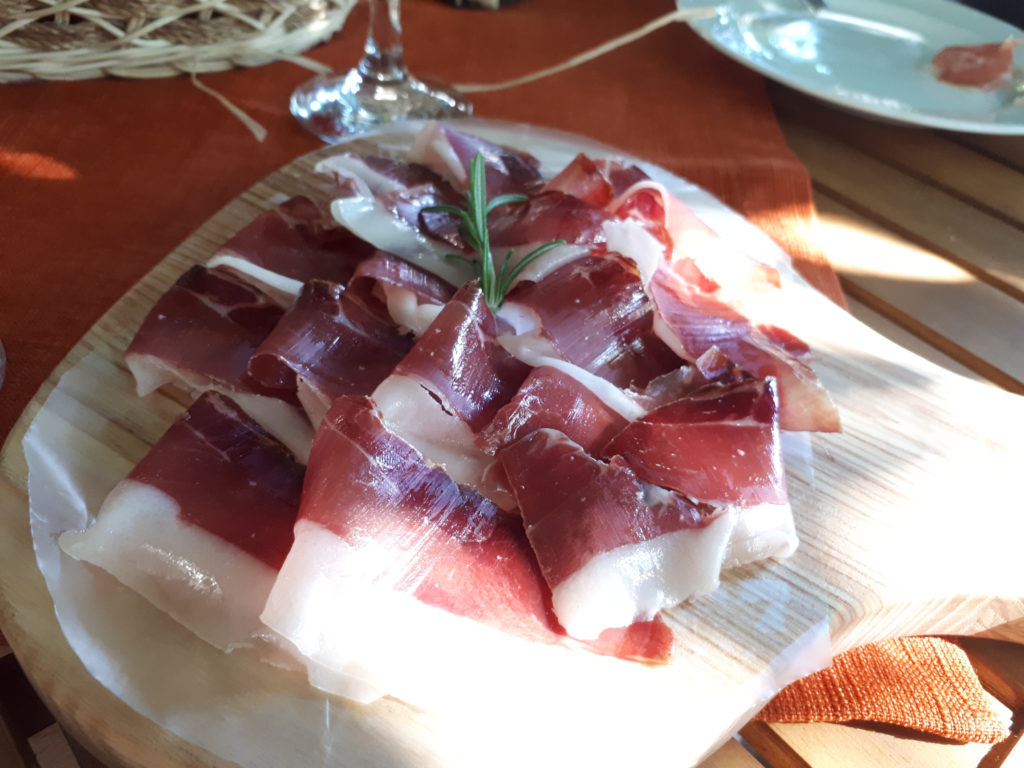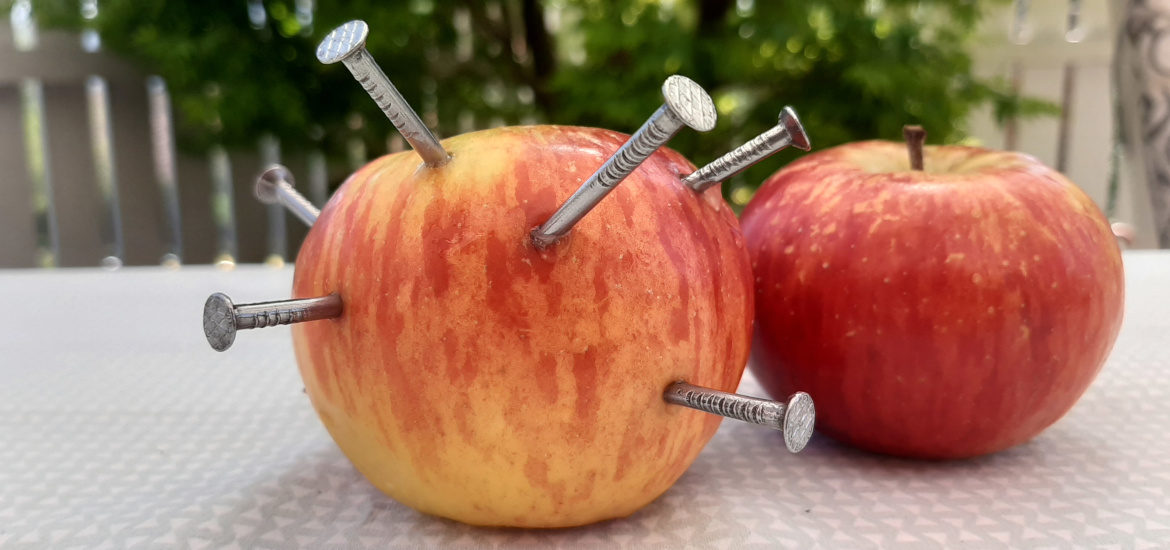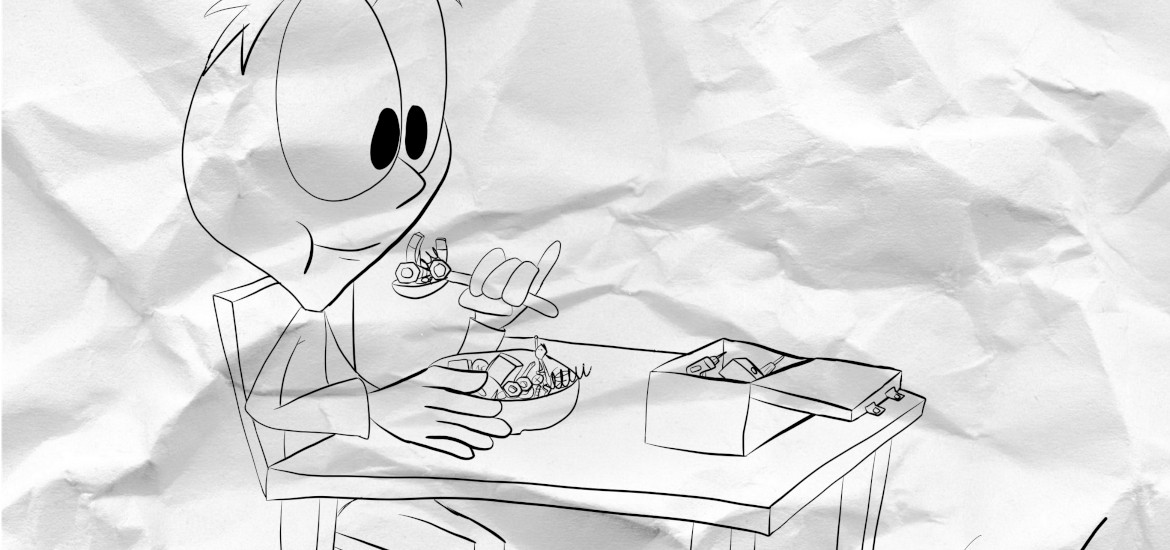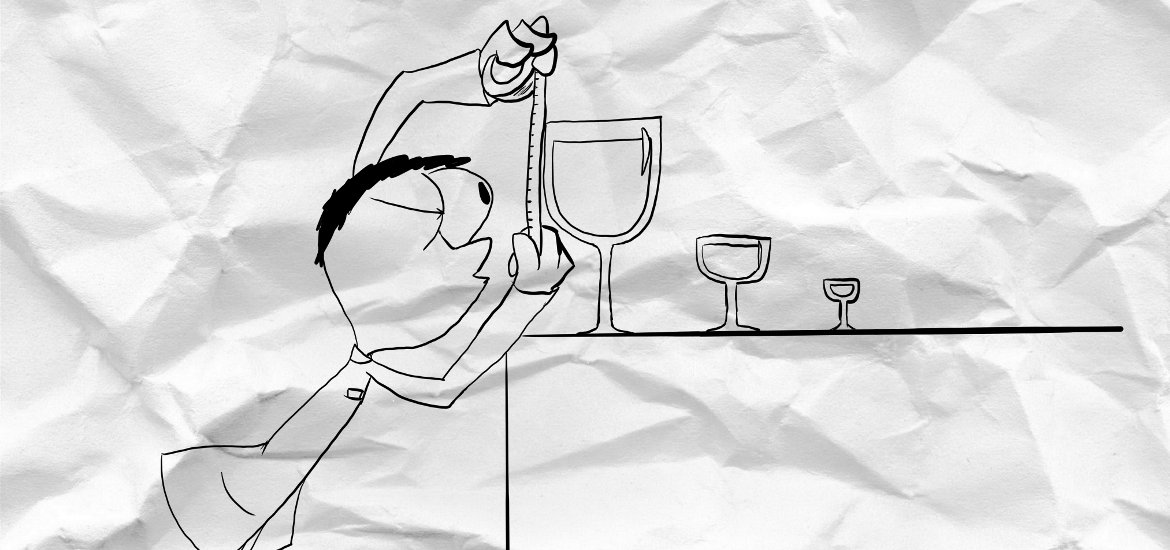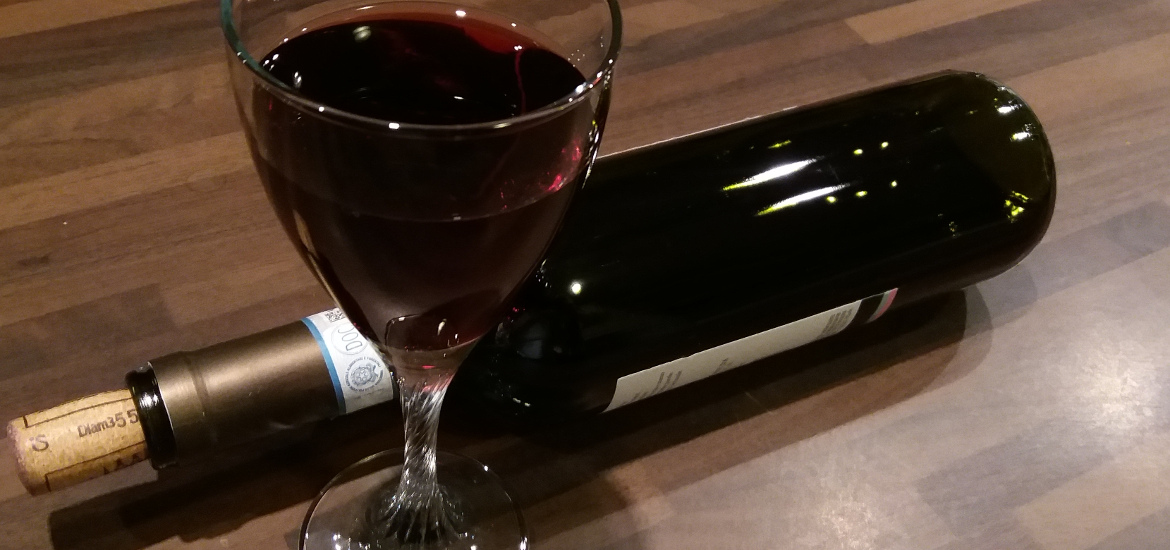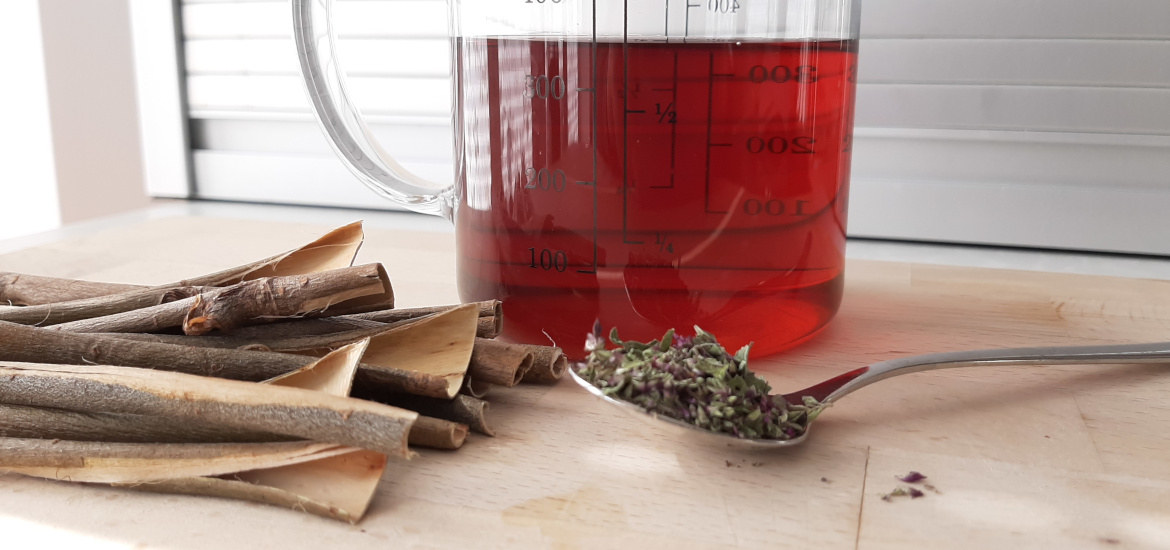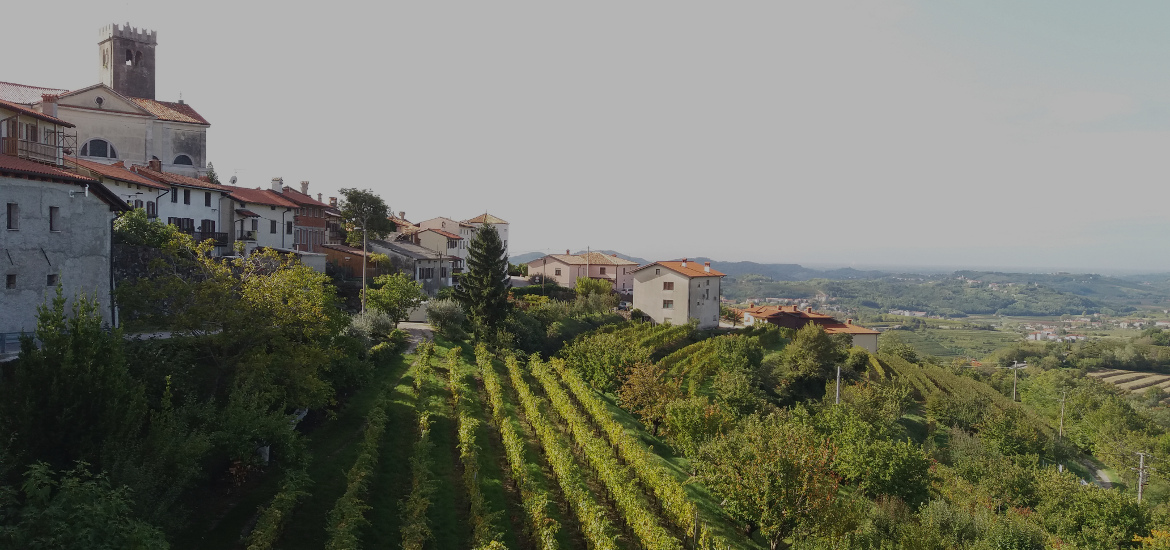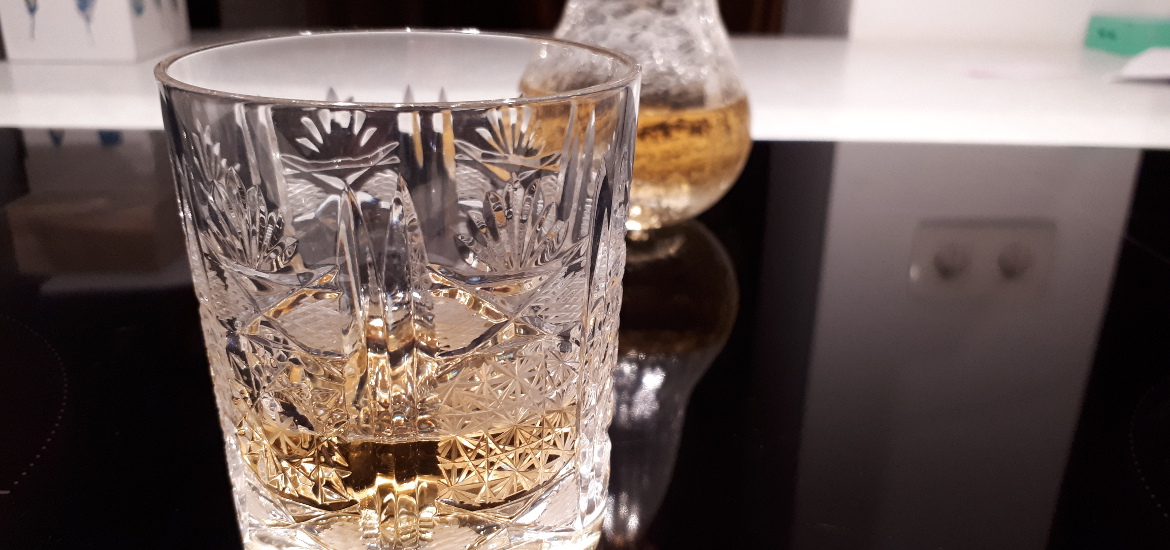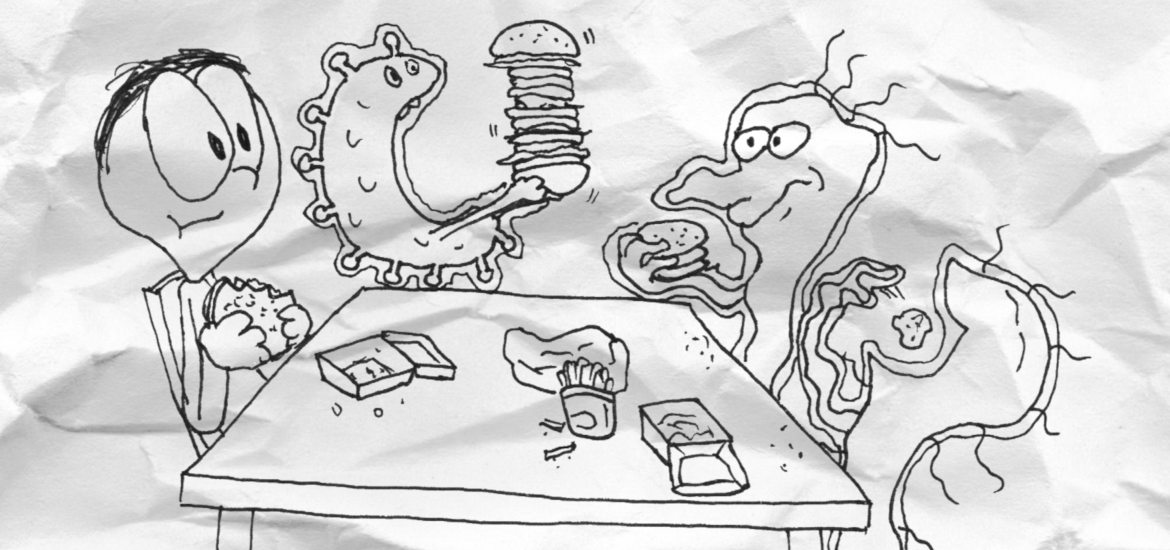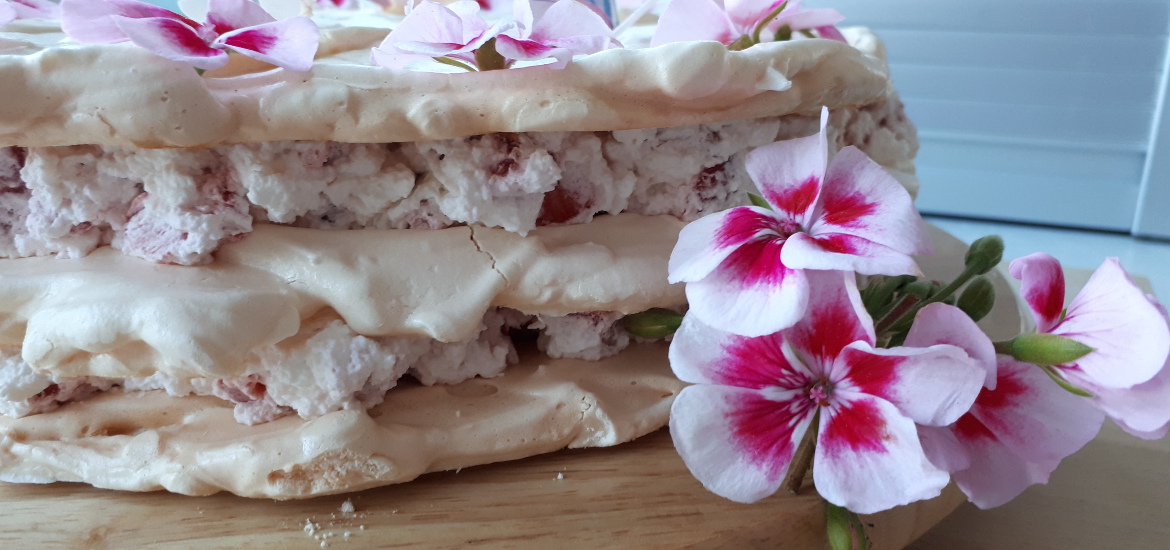I have already explored the iron absorption in our bodies. Now for the fun part: some delicious recipes for boosting your blood iron. Easy to prepare and simply delicious! Even if your blood iron is OK, you should try at least one or two! Feel free to share your favorites in the comments below.
Spiked Apples
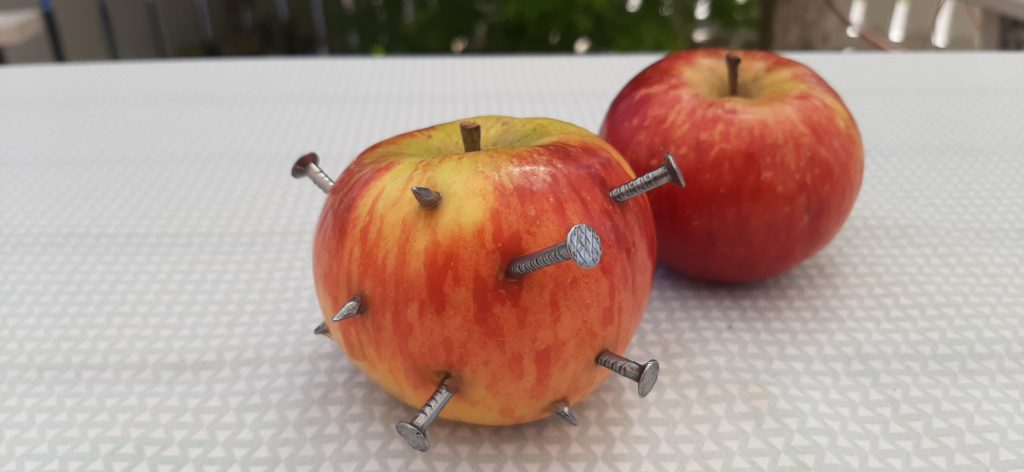
That is my great-great-grandmother recipe. It is pure simplicity. Take your favorite apple and some plain, simple iron nails. Clean the nails with alcohol rub to get all the grease and microbes off. Stick the nails though the apple and leave them in the apple for 24 hours. Remove the nails and – done. If you cut the apple, the places where the nails were are black – and this is perfectly OK (see picture below). These are just iron salts which formed – you can safely eat the apple. And the absorption of iron from this source is comparable to absorption from common irons supplements. One apple could provide around 10 mg of iron, nicely adding to your daily requirement. An average daily iron requirement is around 10 mg, but not all iron from the apple is absorbed. Nevertheless, one such apple together with a regular, healthy and mixed diet should be more than enough.
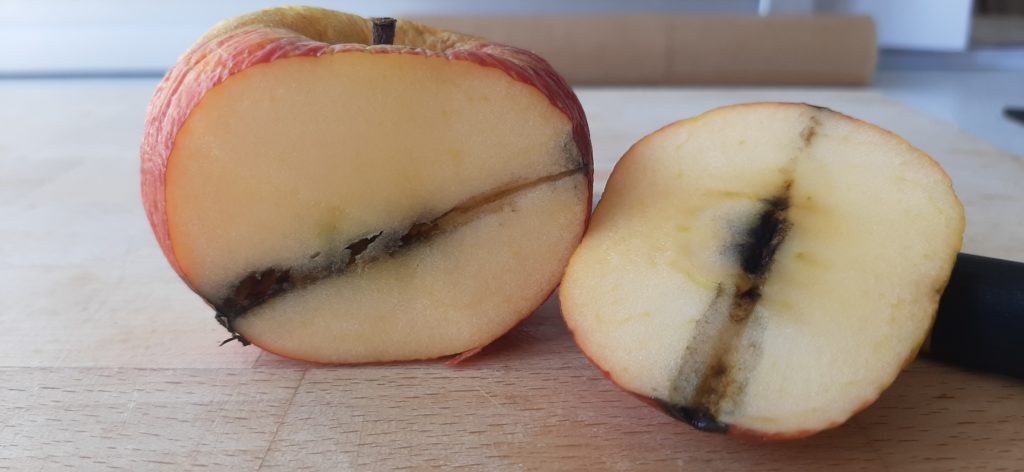
Red wine custard
Red wine is an excellent source of iron. Just select the right kind, since not all are the same in iron content – a good merlot is a nice choice. One deciliter of wine will contain up to 1 mg of iron, which can cover around 10% of your daily requirement. As an added benefit, iron absorption from the wine is enhanced compared to the iron absorption from plain alcohol. There are, however, justified concerns that tannins in red wine could reduce iron absorption. While this is a theoretical possibility, current studies conclude that this effect is probably not important (here, here and here). If you are still not convinced, you can also use white wine to prepare a delicious custard.
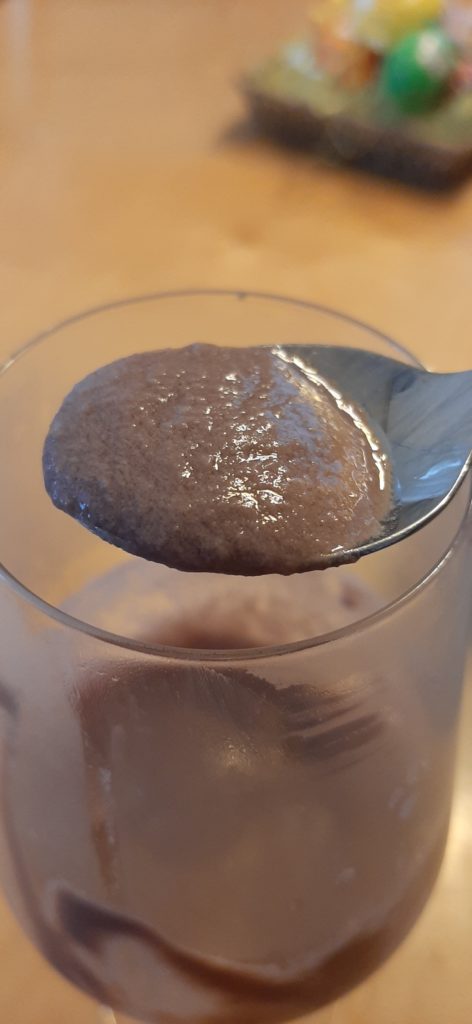
A nice and simple recipe for wine custard can be found here and a more complicated (but more tasty/spicy) here. It’s an added benefit that custard is made with eggs, since they are also a source of iron – around 0,6 mg per an egg (that is 5% of daily requirement). If we consider one egg and one deciliter of red wine per serving, this should cover around 15% of your daily iron requirement – not bad and definitely delicious.
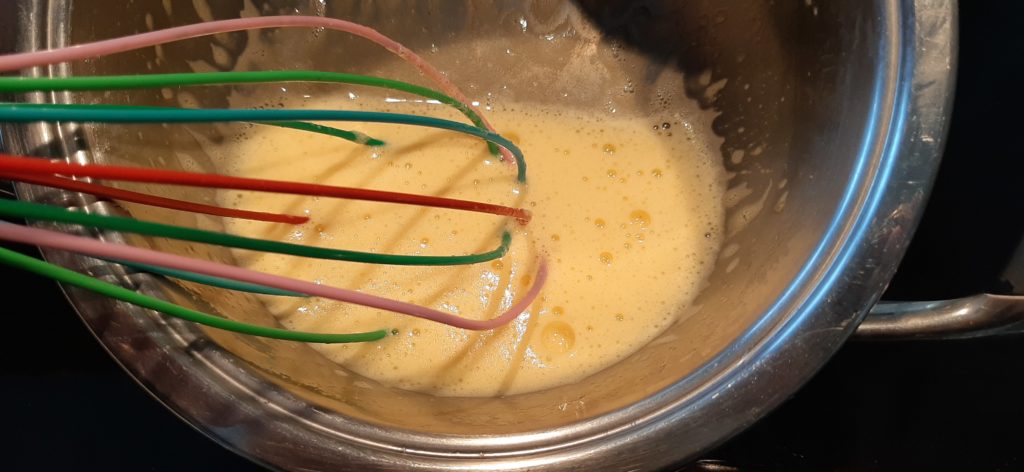
My fast and easy recipe contains one egg, one teaspoon of sugar and 1 deciliter of wine per person. Just whip the egg and sugar, add boiling wine and cook until it thickens and almost starts to boil. The color of the red wine custard is not so appealing – but the taste is. If you are looking for something more presentable, do try the white wine. The amount of iron is usually lower (around 50% of the amount in the red wine), but the look is much more appealing.
Liver pate
Animal liver is an excellent source of iron. Unfortunately, there are not many people who enjoy eating liver. Unless you make it into a delicious pate. Truly, I have seen a lot of people sniffing their noses at fried or braised liver, but I have never seen anyone sniffing a nose at this pate. The taste is simply havenly, full of flavor and spices. It’s excellent cold, but hot from the oven it’s even better. You would never guess that it also delivers 10 mg of iron (100% daily requirement) in 50 g serving, which can be consumed in a flash. Any type of liver can be used, although pork has by far the highest iron content, followed by chicken and beef.
For an appetizer for around 5-6 people you would need:
- 300 g liver (beef, pork or chicken)
- 1 small onion
- 75 g margarine/butter
- 2 spoons flour
- 2 dl milk
- 1 egg
- 1/2 teaspoon of each: salt, pepper, piment, marjoram, nutmeg
- Bacon for cover
From margarine, flour and milk, prepare the bechamel sauce (you can also use a pre-prepared one). On low heat melt the margarine/butter and add the flour. Boil for a bit, stirring constantly. Add the milk in small steps, mixing vigorously to get a smooth sauce.
Blend the liver and an onion in a blender, to get a thick, smooth mass. Add the bechamel sauce, egg and all the spices. Blend some more. Pour the mass into an oiled baking pan. The pate should be between 5 to 10 centimeters thick – adjust the size of the pan or the amount of the pate mass. Cover the surface of the pate with a layer of bacon for the extra touch. Bake for 1 hour at 200 °C. First 45 minutes the pate should be covered (e.g. with aluminum foil), after that remove the cover and bake for 15 minutes more, to bake the bacon on top to a perfect crisp.
Spiced plums with honey mousse
This is not my recipe, although I have mentioned it. It is skillfully done by the experts at the Inn at the Crossroads – you should definitely check their site! And be sure to check my favorite Spiced plums with honey mousse. Plums are not the top iron containing fruit, but they do contain a lot of ascorbic acid to aid iron absorption. Red wine makes up for the iron missing in the plums and gorgeous taste guarantees that you eat the full serving. A quick assessment based on the recipe shows around 1 mg of iron (10% daily requirement) per serving, the vast majority coming from the wine.
Red wine and prosciutto
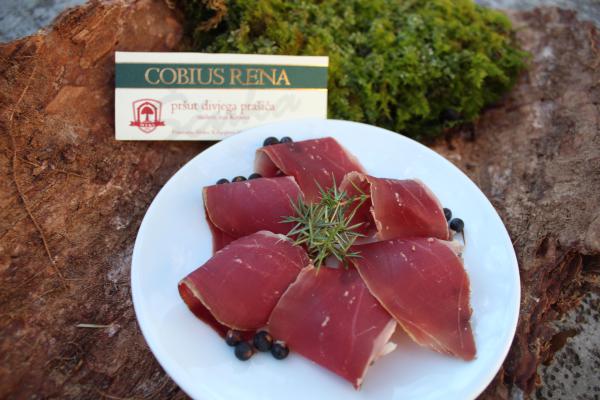
Although white wine is probably a much better idea in regard to iron absorption due to the lower amount of polyphenols, I strongly believe in red wine and prosciutto. Even if the iron absorption is not optimal, it sure tastes heavenly! A standard portion of 50 g of prosciutto contains on average 2 mg of iron, and a 2 deciliter glass of red wine adds additional 2 mg, covering around 40% of your daily requirements.
